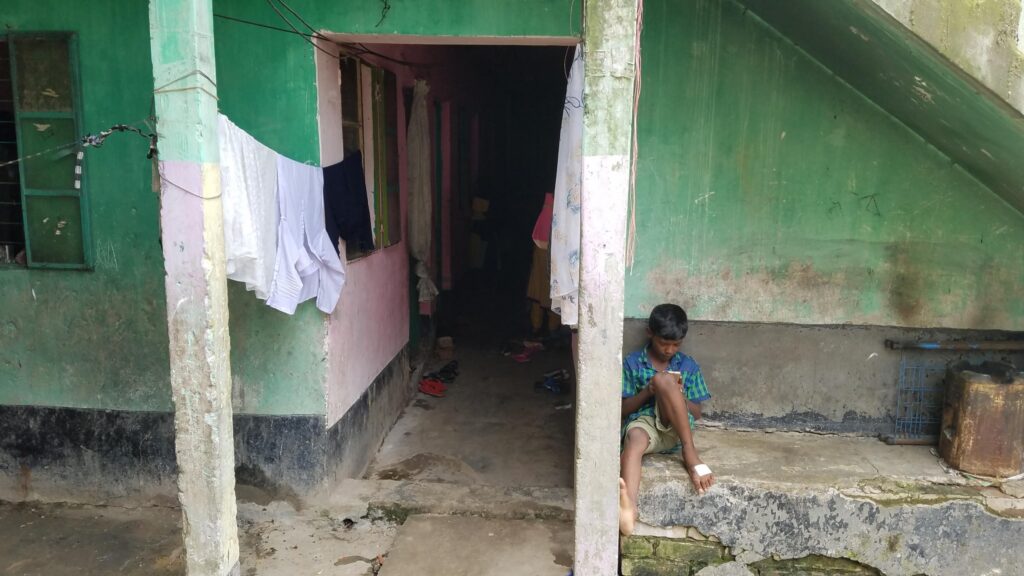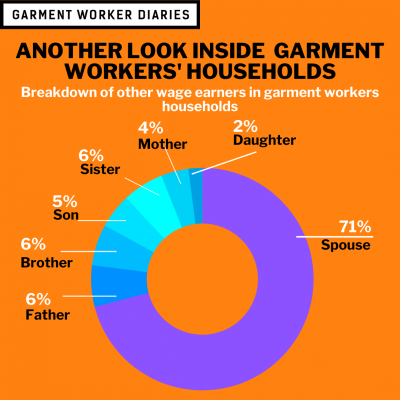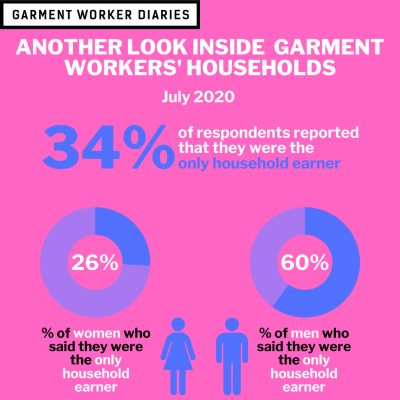Last month we shared some insights into the economics of garment workers’ households by providing details on the income, work hours, and composition of additional household wage earners. We feel it is important to understand not just how individual garment workers are coping during the COVID-19 crisis, but how the members of their household upon whom each other depends are also faring.
Below are the results of MFO and SANEM’s July 2020 survey into the household economies of garment workers. We also compare July to the months that came before.
Household Earner Demographics
Just as we did last month, we asked garment workers in Bangladesh how many wage earners were living in their household not including themselves during the month of July 2020:
- 34% of respondents reported that they were the only household earner
- 26% of women said that they were the only household earner, compared to 60% of men who said the same.
The remaining 66% of households reported there was at least one additional wage earner living at home other than the respondent themselves. We secured consent from 83% of these households to share the economic activity of the other wage earners residing in the home. Of those consenting households:
- 91% of respondents reported one additional wage earner in the household
- Almost 9% of respondents reported two additional wage earners
- Less than 1% of respondents reported three or more additional wage earners
These statistics from July 2020 are very similar to the March through June period. The following demographic breakdown is also similar to what we previously reported:
- 71% of other wage earners in the household during July 2020 were the respondent’s spouse
- In the case of women respondents, 73% of other wage earners in the household during July 2020 were the respondent’s spouse, compared to 57% in the case of men respondents.
- Other than spouses, respondents reported the following relatives were wage earners in their household in July:
| Relationship to Respondent | Share of wage earners |
| Father | 6% |
| Brother | 6% |
| Sister | 6% |
| Son | 5% |
| Mother | 4% |
| Daughter | 2% |
Wages and Work Hours of Household Earners
We also asked the respondents to find out the wages and work hours of other earners in the household during July 2020. The findings in July continued the trends found in June, which saw a continued drop in unemployment, increased work hours, and a narrowing of the gap between women and men in earnings.
In July 2020:
- 96% of other household earners went to work, with little difference between women and men (94% in June)
- The median work hours reported for other household earners was 239, with little difference between women and men (234 in June)
- The median salary amount of the other household earners was Tk. 10,000 (Tk. 9,000 in June)
- The median salary amount for women was Tk 10,000 compared to Tk 9,000 for men
- The most commonly reported job type for other wage earners in July 2020, for both women and men, was ‘garment worker’ with 51% of all other household earners working in the garment sector (42% in June)
- 87% of other wage earners who were women worked in the garment sector, compared to 42% of men
- Whereas the only other job type women reported was “other”, men reported both “other” and additional job types such as driver, carpenter, salesman, shop worker, rickshaw puller, and security guard
- 87% of other wage earners who were women worked in the garment sector, compared to 42% of men
All data presented here come from interviews conducted over the phone with a pool of 1,272 workers. These workers are employed in factories spread across the five main industrial areas of Bangladesh (Chittagong, Dhaka City, Gazipur, Narayanganj, and Savar). Just over three-quarters of the working respondents are women, roughly representative of workers in the sector as a whole.




